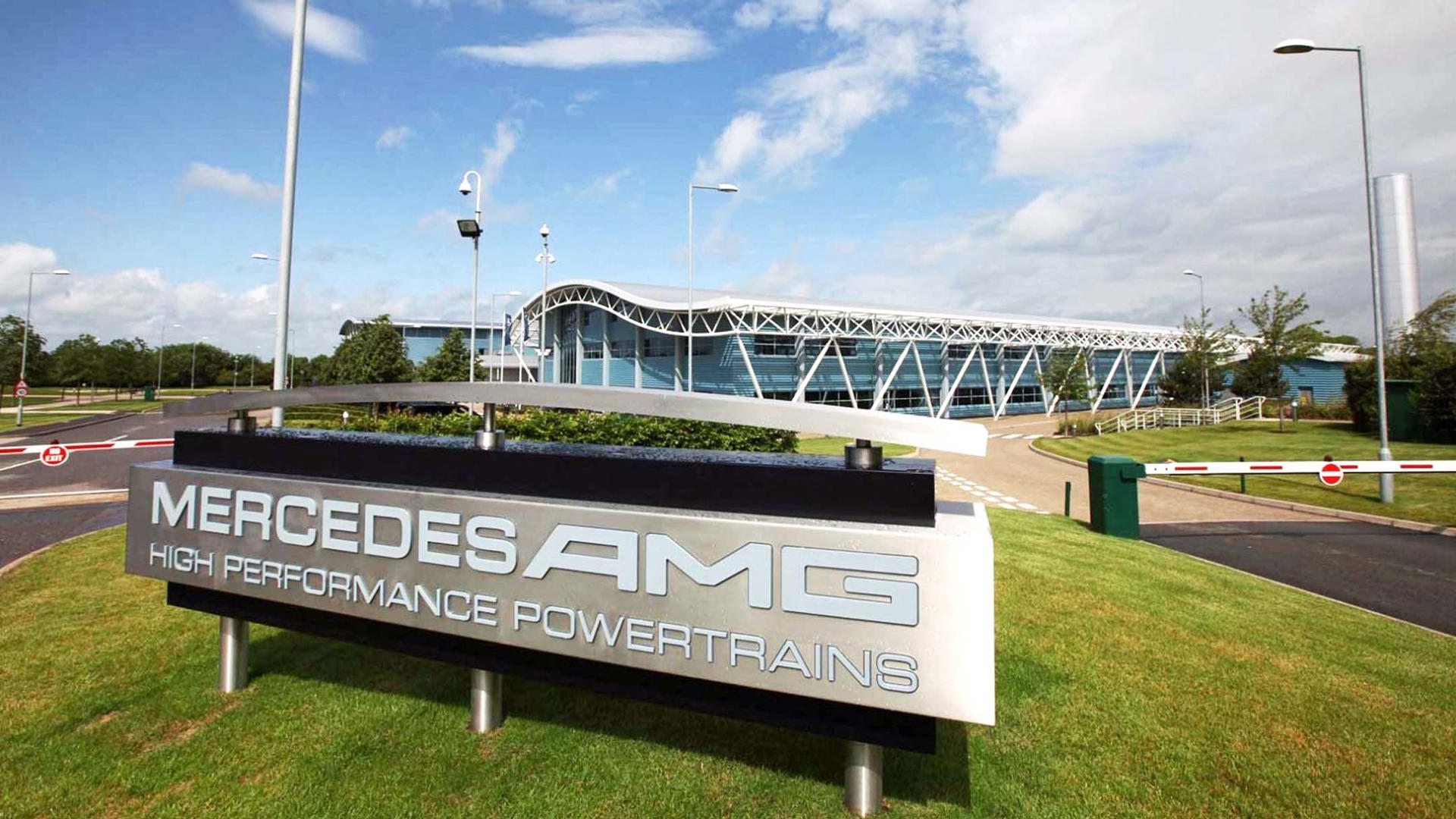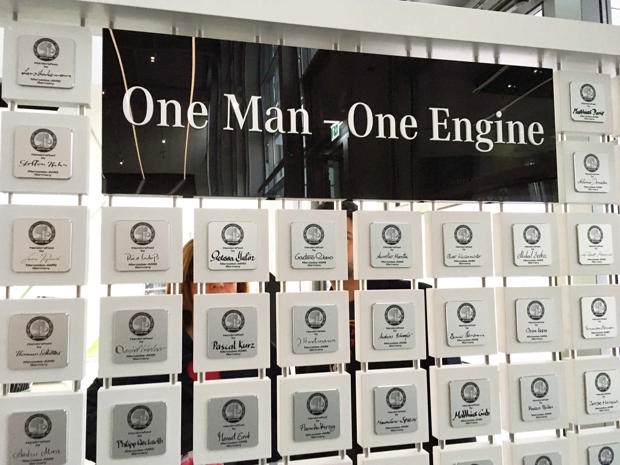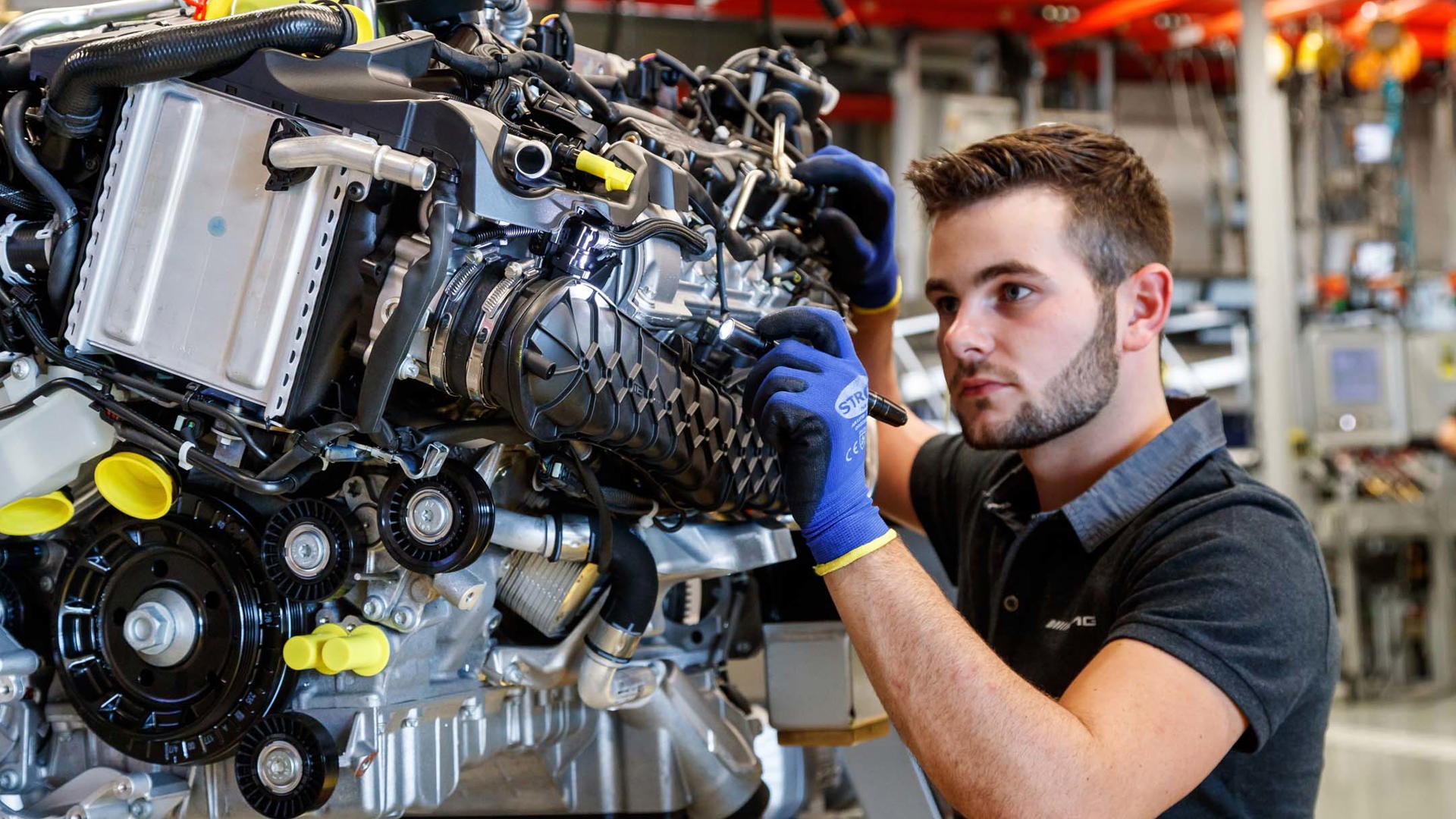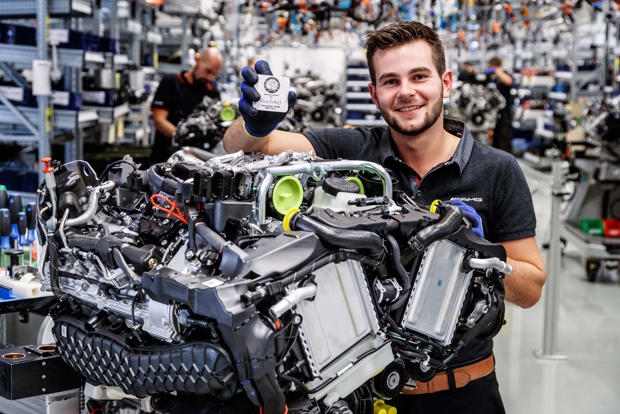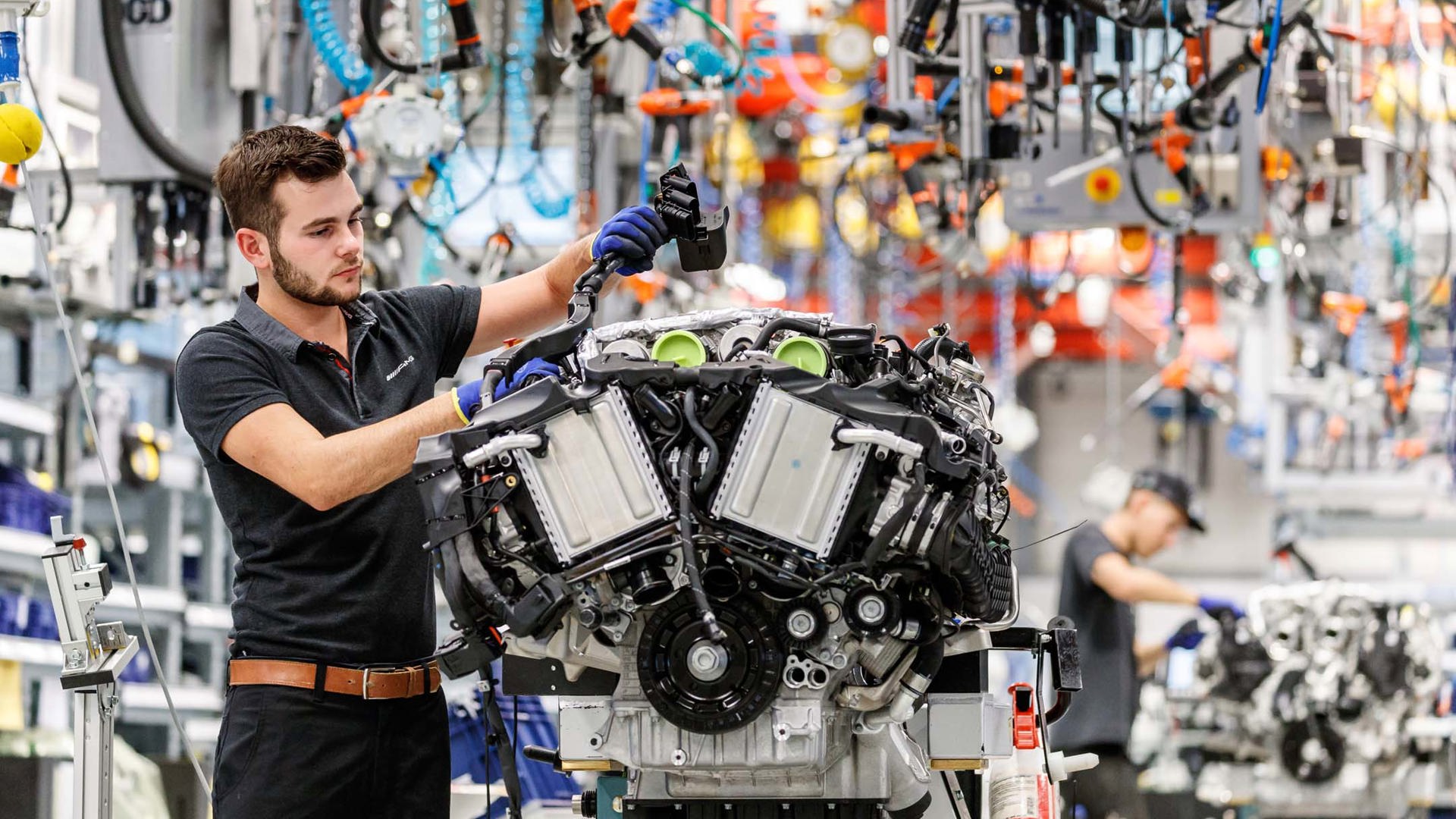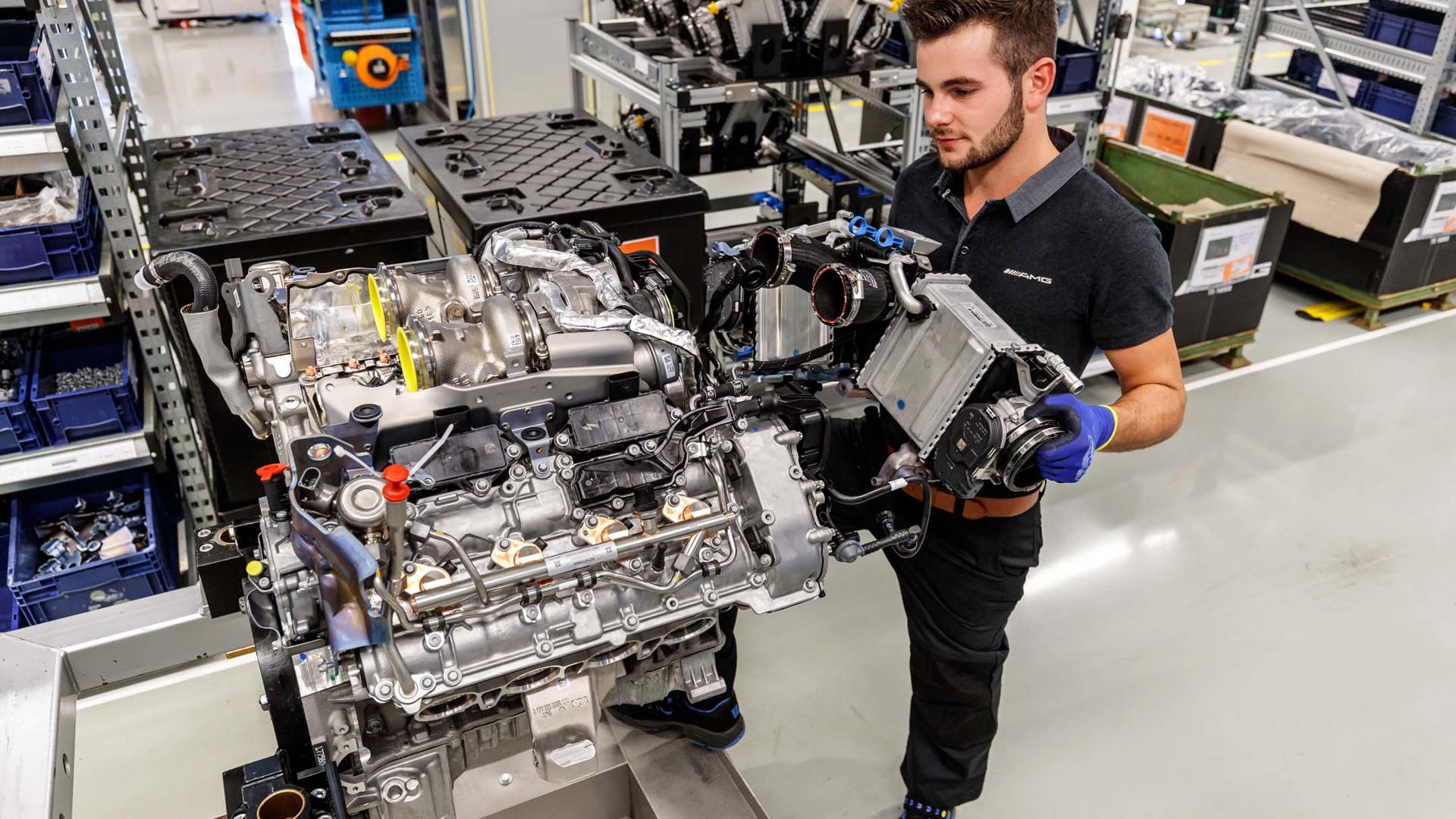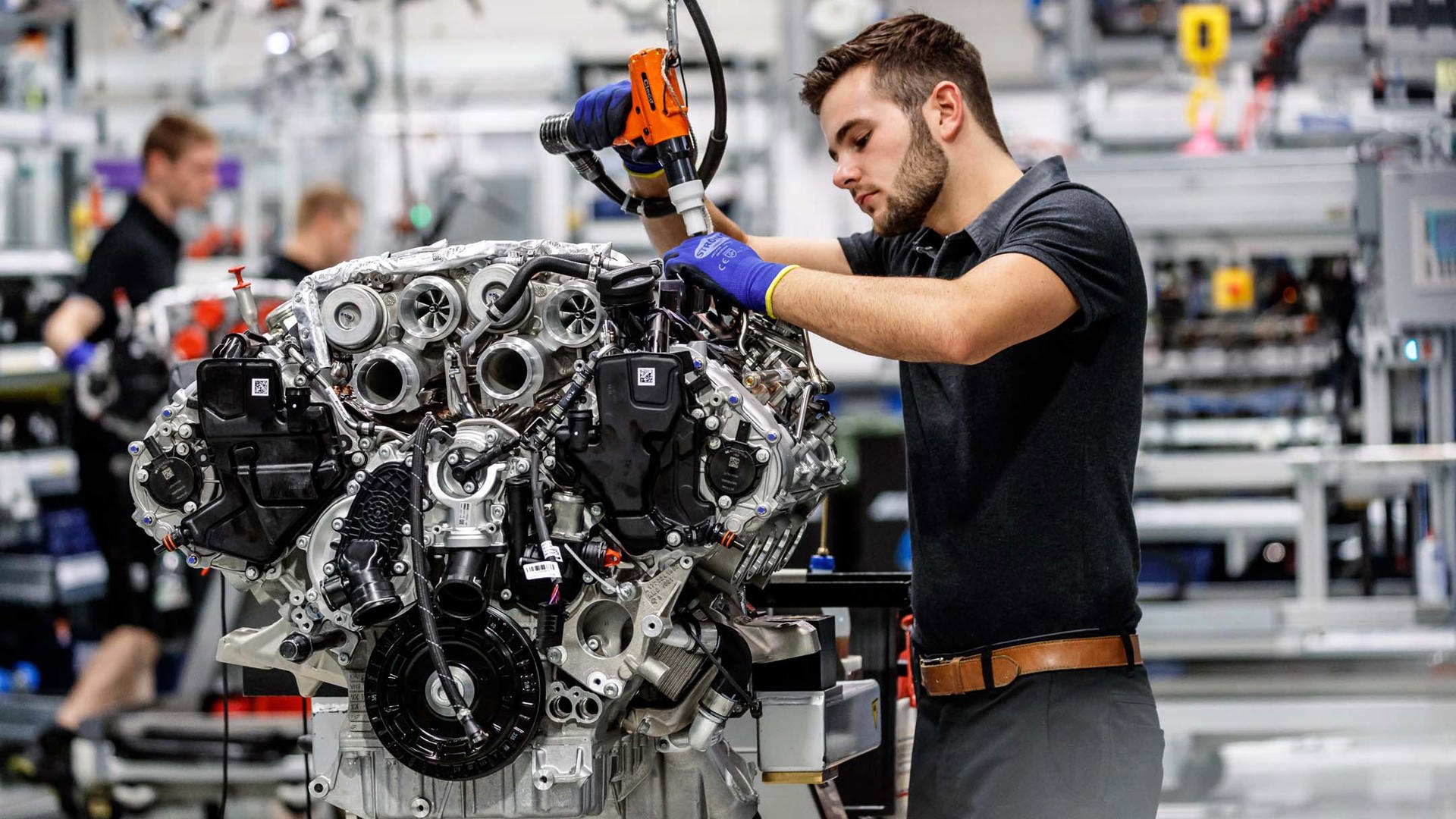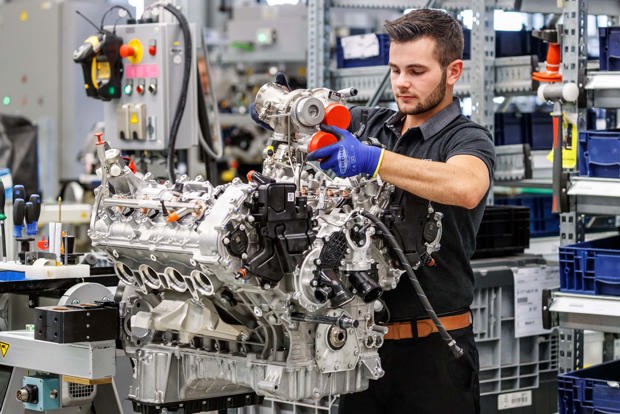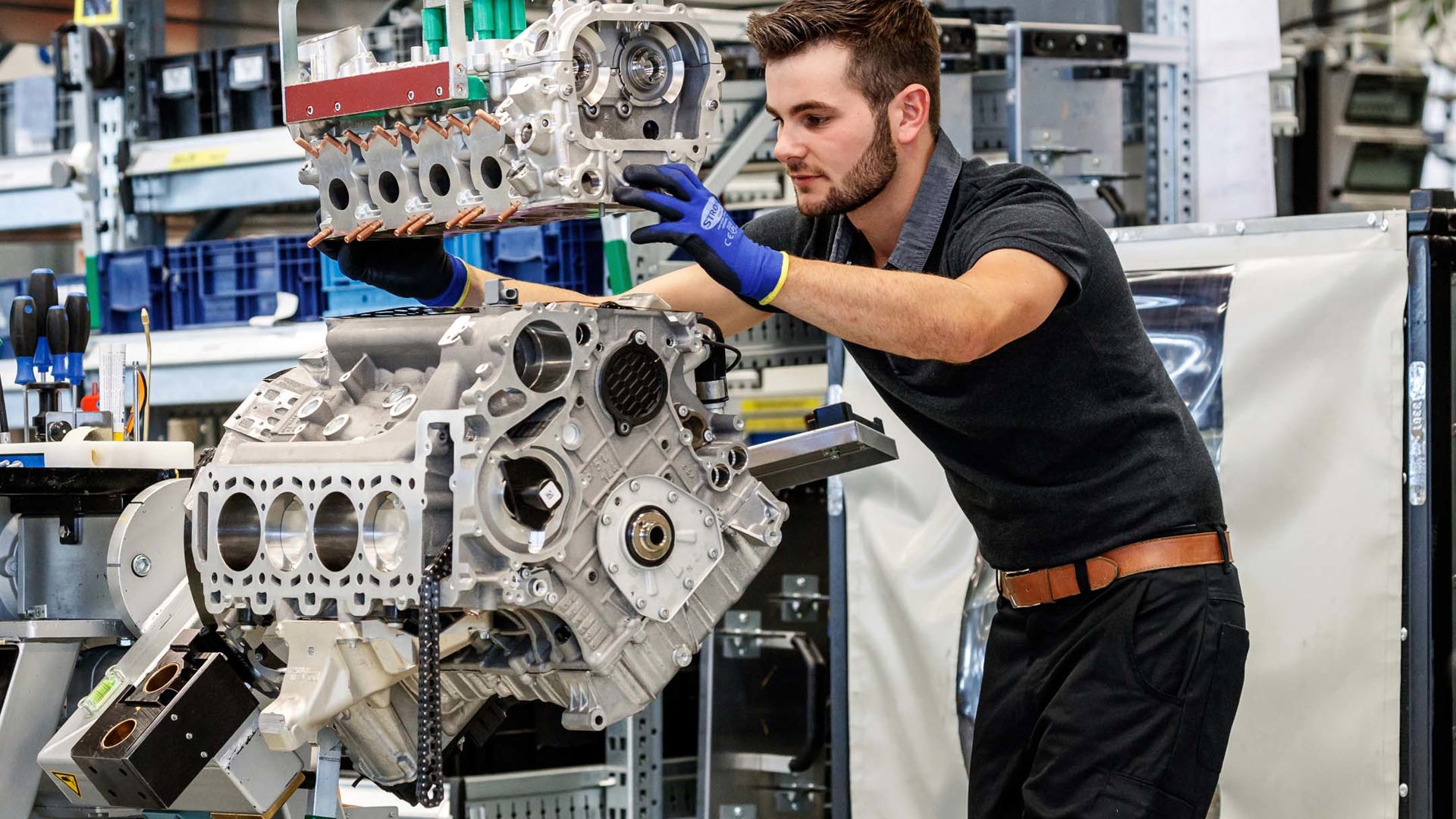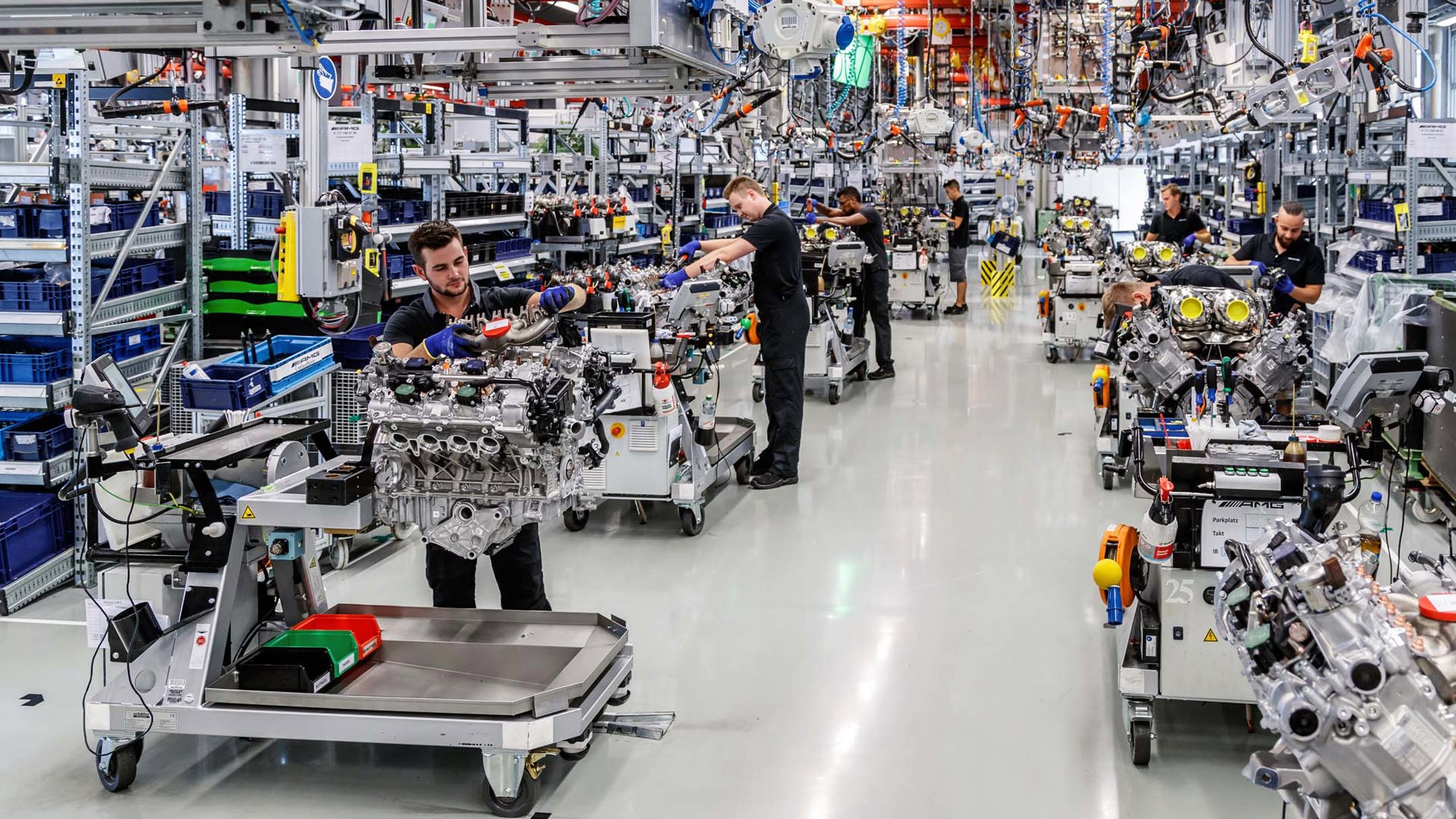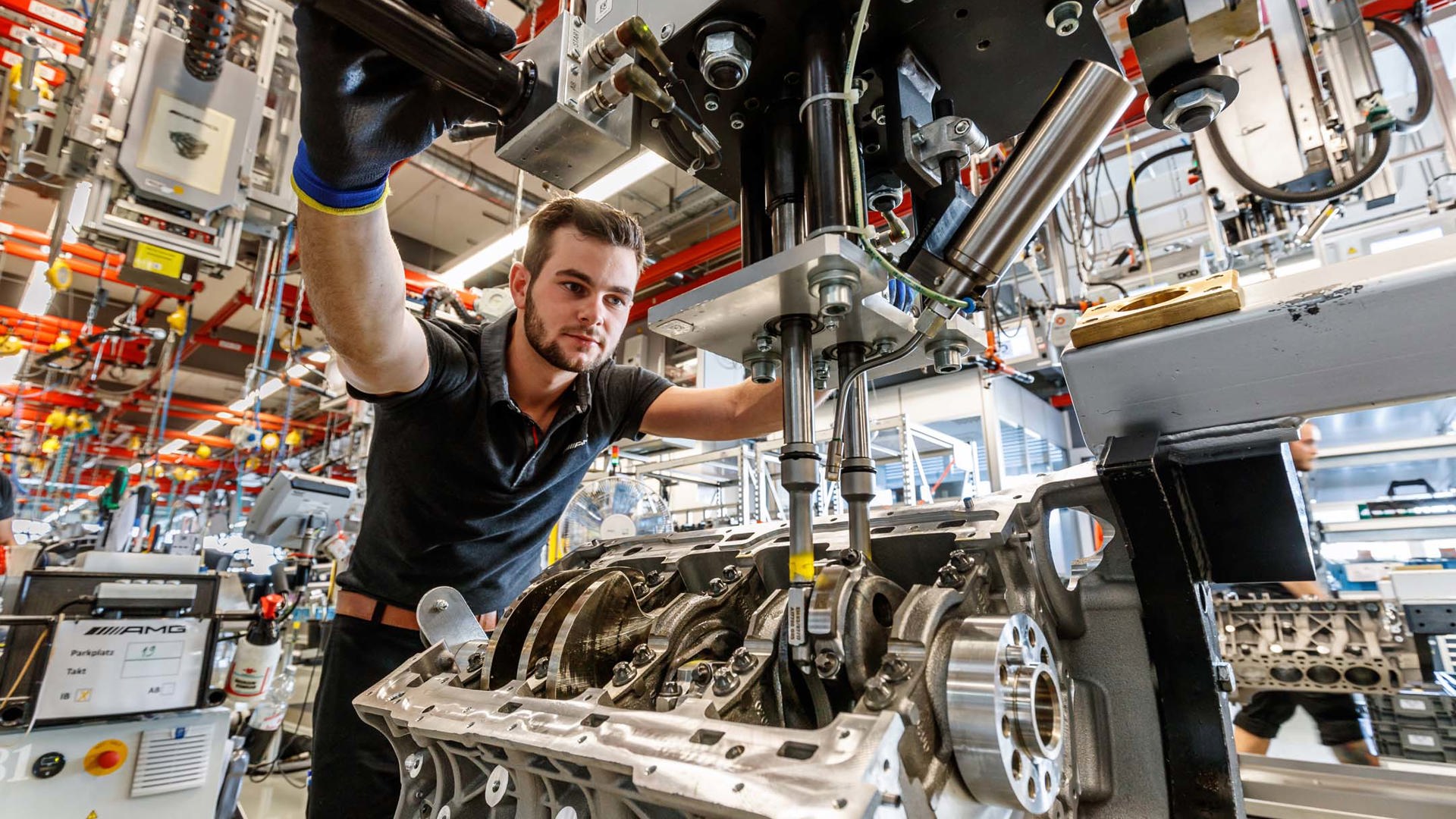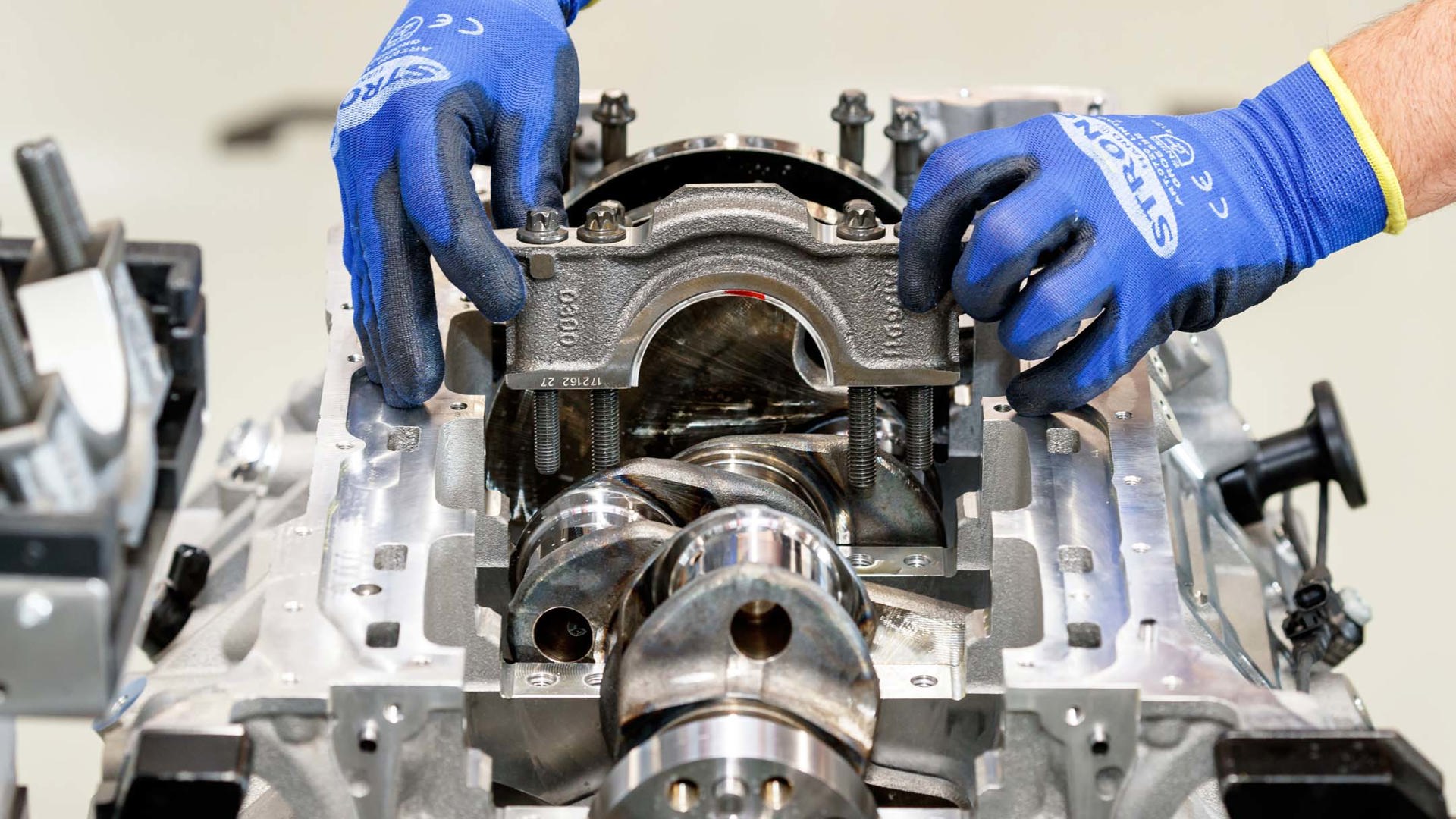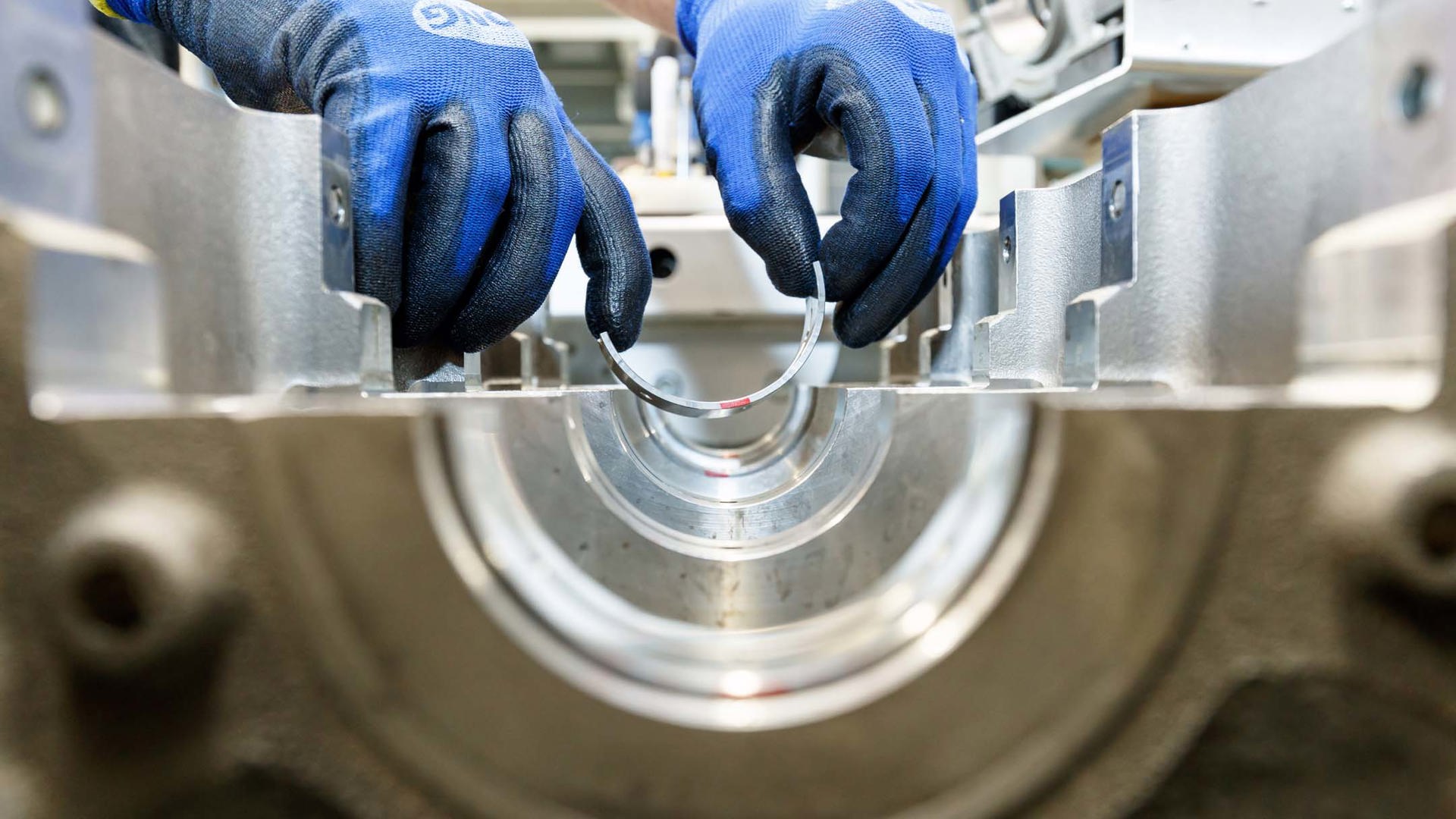AFFALTERBACH, Germany – Michael Kübler has more than 198,000 followers on his Instagram account. He’s not a movie star, a rock singer, nor a television celebrity. But for those of us who worship at the altar of internal combustion, he’s a superstar in his realm. Kübler is a master engine builder at Mercedes-Benz’s AMG production facility, and the only technician in the world entrusted with building both Pagani Huayra and Mercedes’ GT3 motors.
Visiting the AMG plant is a pilgrimage of sorts for enthusiasts, renowned as much for the clinical virtuosity of its master technicians, as for the pinnacle of performance horsepower it represents. Any preconceived notions you may have of a conventional workshop should be cast aside; entering the Affalterbach site is more like visiting a modern museum.
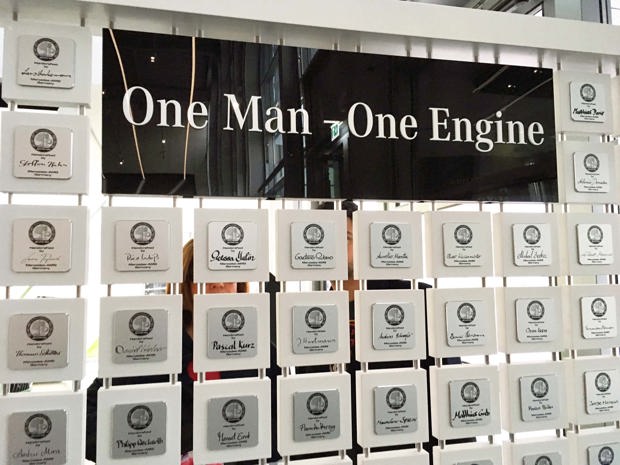
AMG has come a long way since two Mercedes engineers quit their jobs in 1967 to build race cars in an old mill. The first initials of their surnames – Hans Werner Aufrecht (A), his partner Erhard Melcher (M) – and Aufrecht’s birthplace of Grossaspach combined to form the name of the newly established company. Mercedes-Benz was less than enthusiastic that the SE sedan was the basis of many of their builds and asked that their badge be removed. Even Mrs. Aufrecht apparently shared their lack of faith in AMG’s success as she kept and continued to run her hairdressing business – from the AMG office.
But all that changed when a 300 SEL 6.3 known as Die Rote Sau, or The Red Pig, took a surprise class win at the 1971 24 Hours of Spa. Amassing win after win, AMG was suddenly in demand as a “tuner” of Mercedes vehicles. Automakers simply didn’t have performance branches at the time, and independent tuning shops flourished. By 1999, there was a co-operative partnership between Mercedes and AMG, who now had twenty employees. Customers wanting a little more out of their newly purchased Mercedes could send it to AMG for modification.
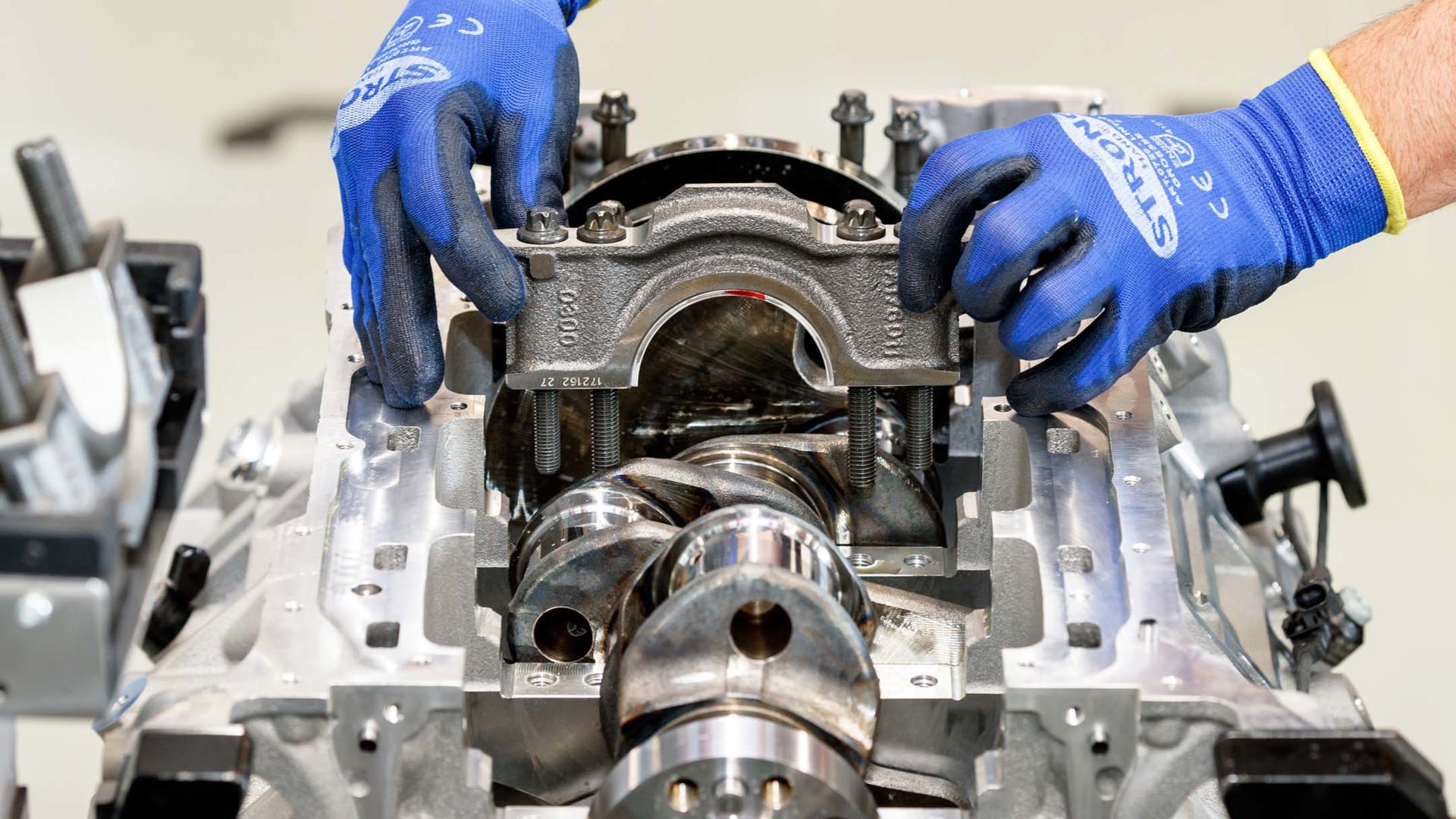
Today, of course, AMG is the renowned skunkworks arm of Mercedes-Benz with a legacy of international victories and world-class performance. But referring to them as “tuners” will likely earn you an icy-cold Teutonic shoulder. AMG is now a full-fledged technology and development facility with some 7–800 engineers, designing high-performance Mercedes variants “from scratch” rather than starting with a finished car.
The Affalterbach site is dedicated solely to the V8 lineup. Due to the rapidly expanding popularity of AMG vehicles (sales have more than tripled since 2013), production of V12s, V6s and four-cylinders have been moved elsewhere – a rather controversial move for enthusiasts who believe that most of the magic is instilled at the site where it all began.
The engine builders, of whom there are approximately 200 (four of whom are women) have attained a sort of mythical status largely centred around their “one man, one engine” ethos.
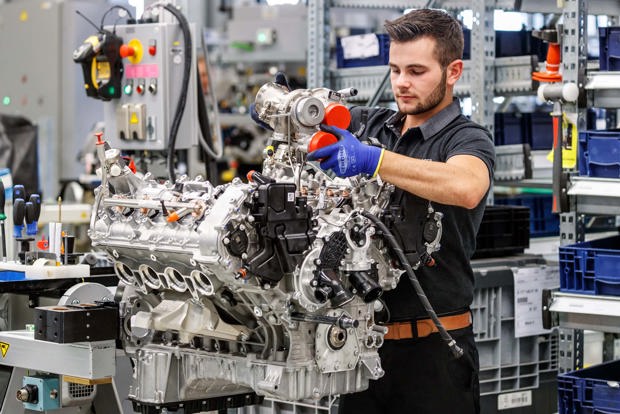
It’s not just a marketing slogan. Every single engine that wears an AMG badge is hand-built by a single technician with 3.5 years of specialized training, and personalized upon completion with a signature nameplate. And they’re not just modified Mercedes units either – AMG’s bespoke engines are separately developed and painstakingly assembled.
No oily rags, greasy tool benches, or casually strewn sockets litter the studio-white space of the engine shop. While the standard method of engine-building entails mounting the block on a stationary stand in the workshop, and assembling all needed parts and tools, AMG has their own unique process whose ergonomics run like a well-oiled machine (so to speak).
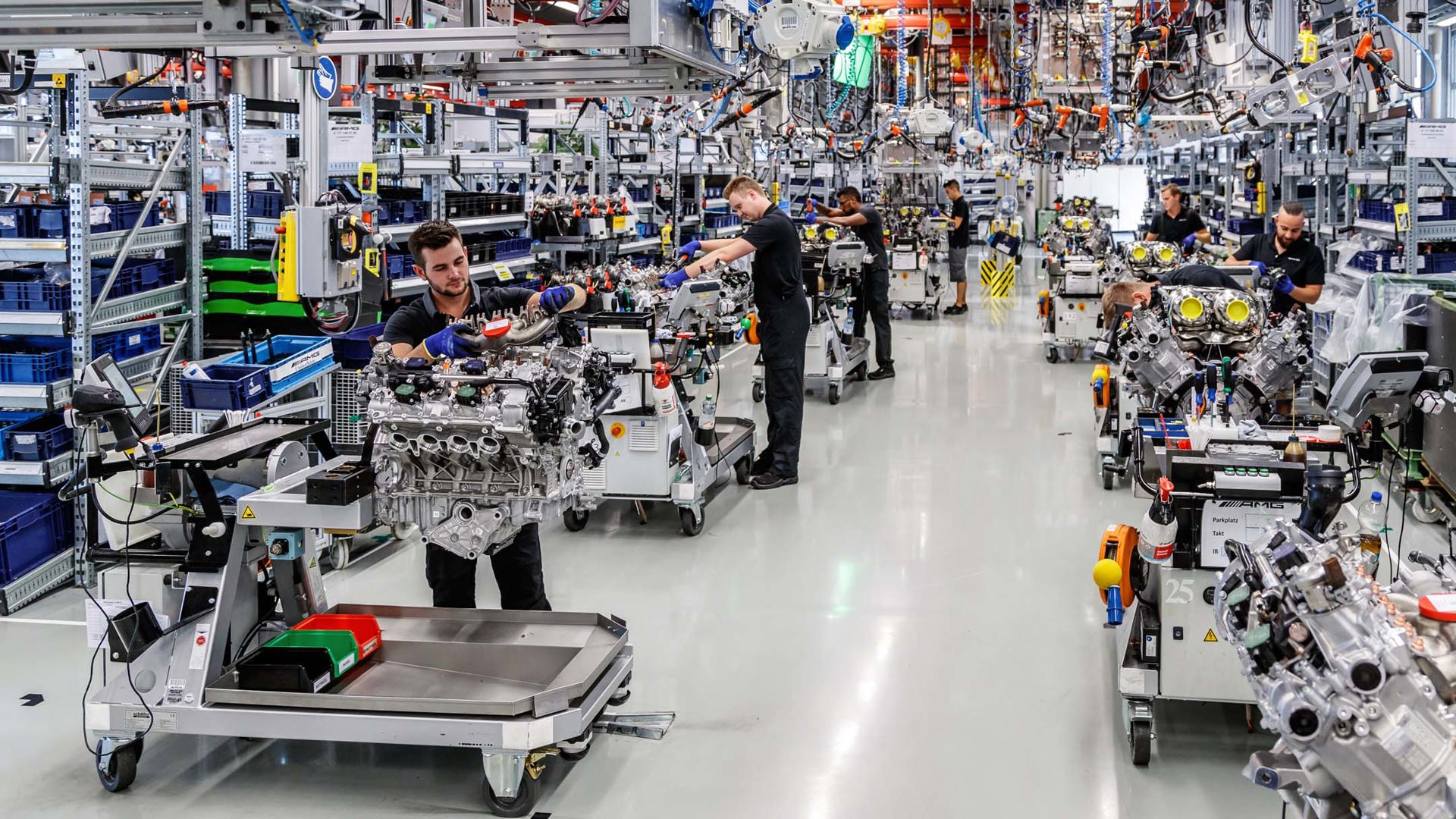
Here, the technician begins with an engine block affixed to a moveable trolley and enters a U-shaped assembly line. Every 4.0L and 5.5L bi-turbo engine build comes with a parts list, and each station along the assembly line is stocked with the parts needed for each step of the build. Overhead, the tools dangle, attached by umbilical cords to the air compressor system. Every part at every station is scanned, and every torque rating and tolerance is recorded by the AMG Trace System. A monitor mounted on the trolley, and another overhead at each station, displays a row of green bars for every step successfully completed. A red bar indicating a missed step, or an incorrectly torqued bolt will lock out the tools at the next station until the problem is addressed. The system is so precise, it can recall a 20-year-old engine number and trace every step of its build history.
Each mechanic will build two of these V8s in a day (upstairs where access is strictly prohibited, a single 6.2L V8 for the AMG GT race car can take up to two-and-half days to build). There are two shifts per day, and partially completed engines are covered and put away. No engine is ever completed by another technician – if one is off for months a new build is begun to fill that order, while the original engine waits for its technician to return. At the engine’s completion, the master builder affixes their signature plate to the manifold. It’s fascinating to watch; a well-choreographed routine of orderlies in black jumpsuits pushing gurneys, and parts gleaming like polished platinum.
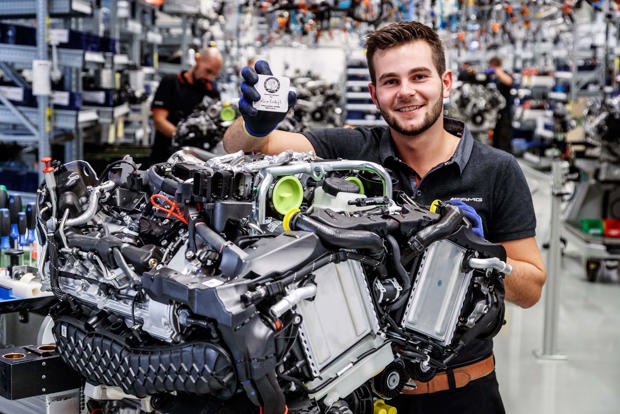
Until the engine is installed in the car and the key is first turned, no spark nor carbon will mar the combustion chamber, nor score any of its pristine inner workings. Instead, the engines are “cold-tested” in a sealed chamber, electronically cranked to 3,000 rpm for three minutes to evaluate compression and ensure that everything functions correctly. Occasionally, one is randomly chosen for a dynamometer test, but according to our AMG spokesman, Andreas Meyer, “hot tests are for development, not customer cars.”
Alas, we never did get a chance to see Michael Kübler, the master builder at work. But on display in the ethereal white lobby is a fantastically intricate piece of the master’s art: the 6.0L V12 Huayra engine.
